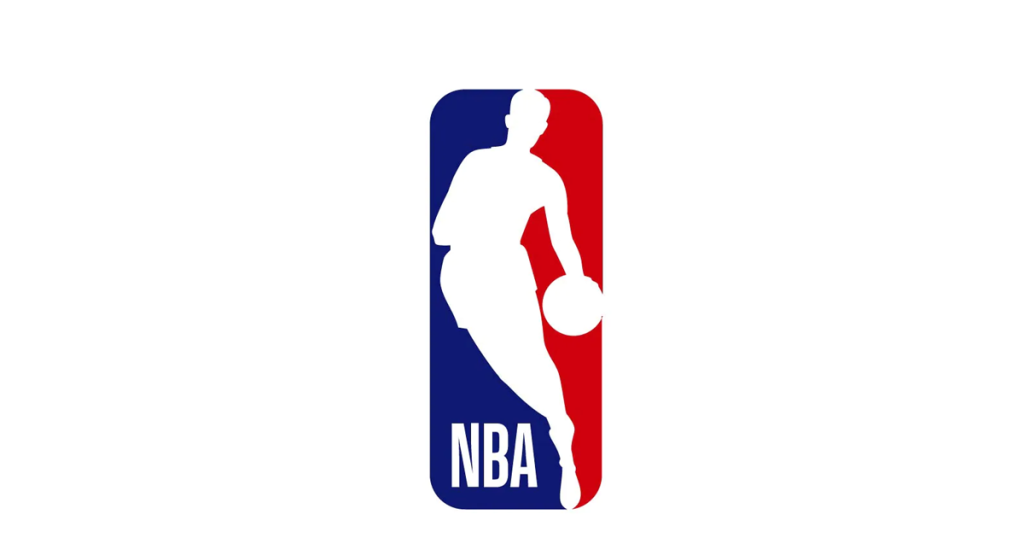The National Basketball Association, popularly known as the NBA, stands as one of the most celebrated and recognized basketball leagues on the globe. Established in 1946, it has since then brought together prodigious talent, creating unforgettable moments and breeding a rich history that fans have come to adore. A common question that newcomers to the sport often ask is, “How many games are in an NBA season?” This query is more than just about numbers; it’s about understanding the rhythm, intensity, and the journey each team undertakes every year in pursuit of the coveted championship. Let’s delve into the anatomy of an NBA season to answer this question and more.
Historical Perspective
The NBA’s journey has been a dynamic one, adapting and evolving to the ever-changing landscape of sports, entertainment, and business. With these changes, the structure and length of the NBA season have seen modifications to cater to teams, players, and the global audience.
Early Days of the NBA In its nascent stages post its 1946 inception, the NBA (initially known as the Basketball Association of America or BAA) had a modest structure. Teams played around 60 games in a season. This was a norm influenced by the logistical challenges of the time, including limited modes of fast transportation and the need for teams to be financially viable.
Expansion and Growth As the league began to grow in popularity and merge with its rival, the National Basketball League (NBL), there was a need to accommodate more teams and ensure fairness in matchups. By the mid-1960s, teams played around 80 games. The shift to the now-standard 82-game season came in the 1967-68 season, a format that has largely remained consistent since.
Why 82 Games? The choice for 82 games is strategic. It allows each of the 30 teams to play the other 29 teams at least twice – once at home and once away. The remaining games are distributed amongst conference and division rivals to foster regional competition and rivalries.
Modern-Day Adjustments In recent times, there have been discussions around shortening the season due to concerns about player health and the quality of games. The compact schedule sometimes leads to ‘back-to-back’ games, which can be physically demanding on players. Additionally, the 2020-2021 season saw a temporary reduction to 72 games due to the challenges posed by the COVID-19 pandemic.
In conclusion, while the number of games in an NBA season has seen changes over the years, each alteration has been in response to the league’s growth, the desire to maintain competitive balance, and external factors like global events. The 82-game structure, standing the test of time, reflects the league’s commitment to delivering top-tier entertainment while maintaining the integrity of the sport.
Regular Season Breakdown
The heart and soul of the NBA’s yearly cycle is undoubtedly its regular season. Spanning over several months, this period determines which teams advance to the nail-biting playoffs and which ones go back to the drawing board. But how exactly is the 82-game regular season structured? Let’s break it down.
The Basics of the 82-Game Schedule Every NBA team plays 82 games during the regular season, with an even split of 41 games at their home venue and 41 games on the road. This balance ensures that every team gets an equal opportunity to capitalize on the “home court advantage” while also testing their mettle in hostile environments.
Conference and Division Matchups The NBA is divided into two conferences: the Eastern Conference and the Western Conference. Each of these conferences is further split into three divisions. The distribution of games is designed to promote rivalries and ensure every team faces a diverse set of challenges.
Division Games: Teams play against their division rivals four times each, totaling 16 games (4 games x 4 teams).
Same Conference, Different Division: Within their own conference but outside their division, teams face 10 opponents four times each and the remaining four opponents three times each. This sums up to 36 games.
Games Against the Opposite Conference: Teams play against each of the 15 teams from the other conference twice – one home game and one away game, totaling 30 games.
The Significance of Matchups While every game is important, matches within the division or the conference can have added weight, especially when playoff spots are at stake. Rivalries, both old and new, often manifest most fiercely in these matchups, with teams vying for bragging rights and crucial positions in the standings.
Concluding Thoughts The 82-game regular season is a marathon, not a sprint. It tests the endurance, adaptability, and spirit of every team. Through the highs and lows, home games and away challenges, each team’s journey is unique. Understanding the intricacies of the matchups and the structure provides fans with a deeper appreciation for the strategies teams employ and the stories that unfold on the hardwood night in and night out.
All-Star Weekend
Amidst the intense battles and grueling schedule of the regular season, there comes a brief pause that’s filled with excitement, glamour, and celebration: the NBA All-Star Weekend. More than just a break from the regular season’s routine, this event showcases the league’s best talents in a festive atmosphere, combining competition with entertainment.
The Essence of the All-Star Break The All-Star Weekend is a tribute to the fans and players alike. It offers a moment of respite in the middle of the season and acts as a celebratory juncture, honoring the game’s best performers as chosen by fans, players, and media members.
Key Events of the All-Star Weekend
All-Star Celebrity Game: Celebrities, ranging from actors to musicians and other public figures, lace up their sneakers and participate in a friendly game, often coached by NBA legends.
Rising Stars Challenge: This game spotlights the league’s young talent, pitting rookies against sophomores in a showcase of the NBA’s future stars.
Skills Challenge, Three-Point Contest, and Slam Dunk Contest: Players exhibit their prowess in various competitions. While the Skills Challenge tests a player’s all-around abilities, the Three-Point Contest is a shootout among the best long-range shooters, and the Slam Dunk Contest showcases gravity-defying leaps and creativity.
The All-Star Game: The crowning event of the weekend, the All-Star Game, brings together the top players from each conference as they face off in a star-studded match. Unlike regular-season games, this is less about the outcome and more about spectacular plays, camaraderie, and honoring the spirit of the game.
Position in the NBA Calendar Typically held in mid-February, the All-Star Weekend marks the halfway point of the NBA season. It provides players not participating in the events with a much-needed break and a chance to recuperate. For teams, it’s a moment to reassess strategies and gear up for the post-All-Star game stretch, which is crucial for playoff seeding.
The Playoffs and Finals
The crescendo of the NBA season is, without a doubt, the Playoffs and the Finals. As the regular season winds down, sixteen teams emerge, battle-tested and ready, with their eyes on the most coveted prize in basketball: the NBA Championship. The atmosphere intensifies, the stakes are raised, and every game becomes a matter of win or go home.
Understanding the Playoff Format
Series Structure: Each round of the NBA playoffs is a “best of seven” series. This means that the first team to win four games advances to the next round. Hence, a series can range from a minimum of 4 games (if a team wins the first four consecutively) to a maximum of 7 games.
Seeding and Matchups: The playoffs consist of eight teams from each conference, seeded based on their regular-season records. In the first round, matchups are determined by seedings: #1 vs. #8, #2 vs. #7, and so on. The winners advance, and the bracket is restructured for subsequent rounds.
Home-Court Advantage: The team with the better regular-season record in each matchup gets the “home-court advantage.” This means they host Games 1, 2, 5, and 7 at their home venue, while the other team hosts Games 3, 4, and 6.
The Road to the NBA Championship
First Round: The top eight teams from each conference face off. While upsets are rarer in a seven-game series compared to single-elimination formats, they do occur, adding intrigue to the proceedings.
Conference Semifinals: The winners from the first round battle it out. By this point, the intensity ratchets up, as teams are now just two series away from the Finals.
Conference Finals: The penultimate round of the playoffs. The two best teams from each conference face off in a series that’s often as thrilling as the Finals itself. The winners are crowned the Eastern and Western Conference Champions, respectively.
The NBA Finals: The pinnacle of the NBA season. The champions of the East and West meet in a titanic clash. With global attention fixed on every game, legends are born, and dynasties are either forged or shattered. The first team to win four out of seven games lifts the Larry O’Brien Championship Trophy and etches their name into basketball immortality.
Impacts on Players and Strategy
The rigors of an NBA season, with its 82-game slate followed by the high-intensity playoffs, undeniably exert a toll on players. This demanding schedule has implications not only for player health and performance but also for the strategies that teams employ to ensure they’re at peak condition for the season’s most crucial moments.
Physical and Mental Challenges
Endurance Test: The sheer number of games, coupled with travel, practice sessions, and training, can be physically draining. Players often deal with minor injuries, muscle fatigue, and general wear and tear as the season progresses.
Mental Fortitude: Beyond the physical aspects, the mental grind of an NBA season is formidable. Players must maintain focus, manage the pressure of high-stakes games, and navigate the ups and downs of wins and losses.
Injury Risk: With the frequency of games and the intense nature of NBA competition, the risk of injury is ever-present. An injury can change the trajectory of a season for both individual players and their teams.
Recovery Time: The compact schedule sometimes offers little room for recovery, especially during back-to-back games or when teams play four games in five nights.
Strategic Response: Rest and Load Management
Scheduled Rest: Recognizing the strains of the season, teams have adopted strategies of resting key players periodically, especially during games that are deemed less critical or during periods of dense scheduling.
Load Management: A term that has become prevalent in recent NBA seasons, load management refers to the proactive strategy of reducing a player’s minutes or sitting them out entirely to ensure they’re not overly exerted. This is especially common for star players or those returning from injury.
Depth and Rotation: To cope with the game volume, teams emphasize roster depth. Having a deep bench allows starters to rest without a significant drop in team performance. Coaches tweak rotations to find the right balance between rest and rhythm for their players.
Data and Sports Science: Modern teams lean heavily on sports science and data analytics. By monitoring player metrics like heart rate, speed, and jump height, and using wearables and tracking technology, teams gain insights into a player’s fatigue levels and can make informed decisions on rest and playtime.
Focus on Recovery: Emphasis on post-game recovery has grown, with teams investing in physiotherapists, nutritionists, and sleep experts to ensure players are rejuvenating optimally.
Comparisons with Other Leagues
Basketball’s global appeal is undeniable, with leagues thriving in multiple continents, each offering its unique flavor and competitive spirit. The NBA is often considered the pinnacle of professional basketball, but how does its season structure stack up against other major basketball leagues around the world?
EuroLeague
Season Structure: The EuroLeague, often viewed as the premier basketball league in Europe, operates differently from the NBA. Comprising 18 teams, each team plays a double round-robin format, resulting in 34 regular-season games.
Playoffs: The top 8 teams qualify for the playoffs, which, like the NBA, follow a best-of-five series format. The four winners then advance to the Final Four, where semifinals, a third-place game, and the championship game occur over a single weekend.
Chinese Basketball Association (CBA)
Season Structure: The CBA consists of 20 teams, and similar to the NBA, they play against each other in a home-and-away format, resulting in 38 regular-season games.
Playoffs: 12 teams make it to the playoffs, with the top four getting a first-round bye. The playoffs are shorter series than the NBA, with early rounds being best-of-three and only the Finals being a best-of-seven.
Australia’s National Basketball League (NBL)
Season Structure: The NBL has a shorter regular season compared to the NBA. With nine teams in the league, each team plays 28 games in the regular season.
Playoffs: The top four teams qualify for the playoffs. The semifinals are a best-of-three series, while the Grand Final series, determining the champion, is a best-of-five format.
Liga ACB (Spain)
Season Structure: Considered one of the top domestic leagues globally, Liga ACB consists of 18 teams. Each team plays 34 games in the regular season, mirroring a double round-robin format.
Playoffs: Eight teams advance to the playoffs. All playoff rounds, including the Finals, are best-of-three series, making it a sharp contrast to the NBA’s longer playoff series.
In Conclusion
The NBA’s 82-game regular season is notably longer than most other major basketball leagues worldwide. However, this extended format allows for intense rivalries, a broader scope for strategies, and a comprehensive test of team endurance and consistency. While each league offers its unique charm and competitive edge, the NBA’s structure ensures a rigorous challenge for teams, making the eventual championship victory all the more rewarding.
777color, in the vast world of sports engagement platforms, stands out for its user-centric approach, offering enthusiasts a chance to engage more deeply with their favorite sports, including the NBA. As the NBA season unfolds, with teams battling it out on the court, platforms like 777color provide fans with a comprehensive interface, offering insights, statistics, and more, allowing them to be more than just passive spectators. While it’s always essential for users to approach such platforms responsibly and be aware of their regional regulations, the amalgamation of sports knowledge and fan engagement brings a fresh dimension to the modern sports experience.























